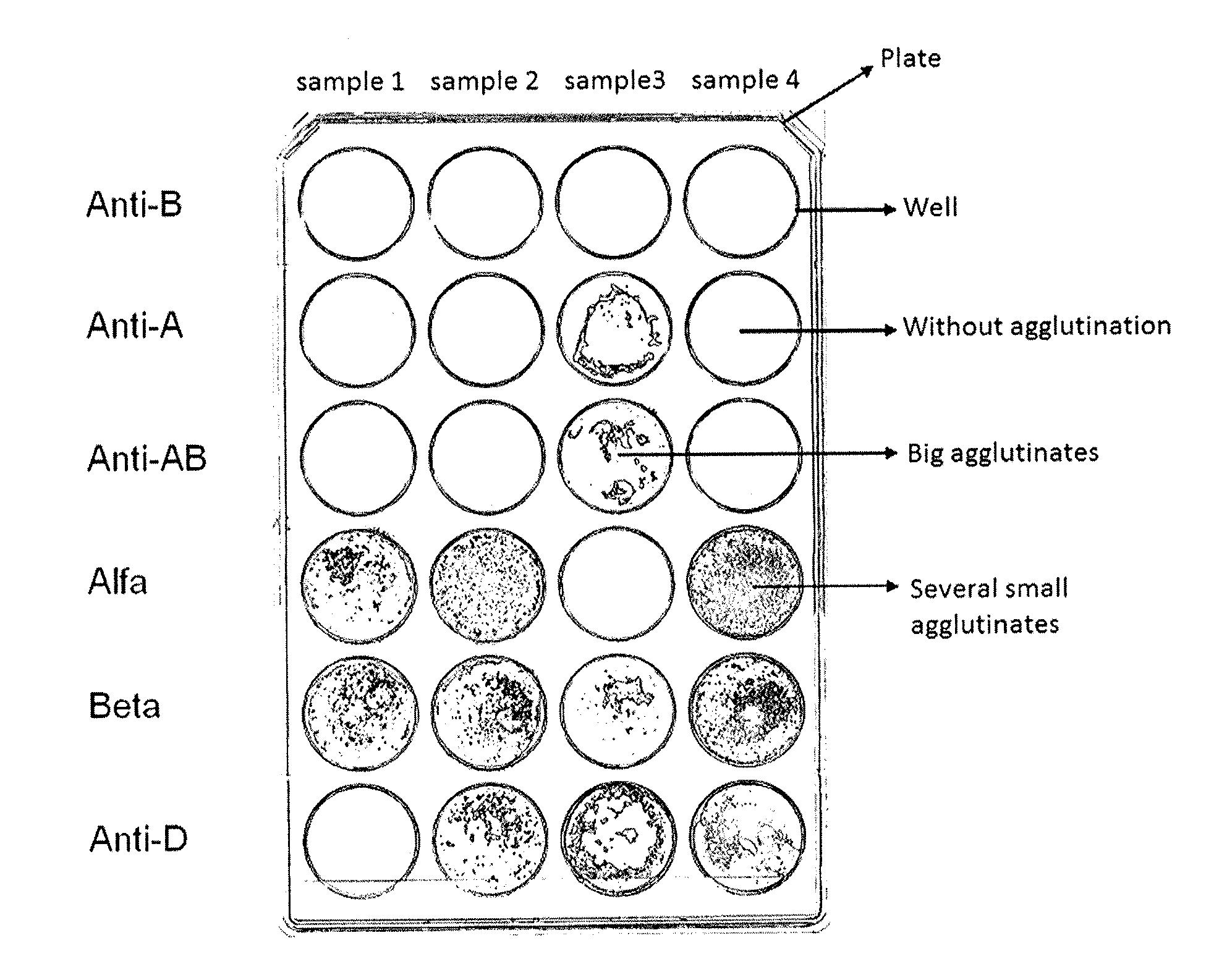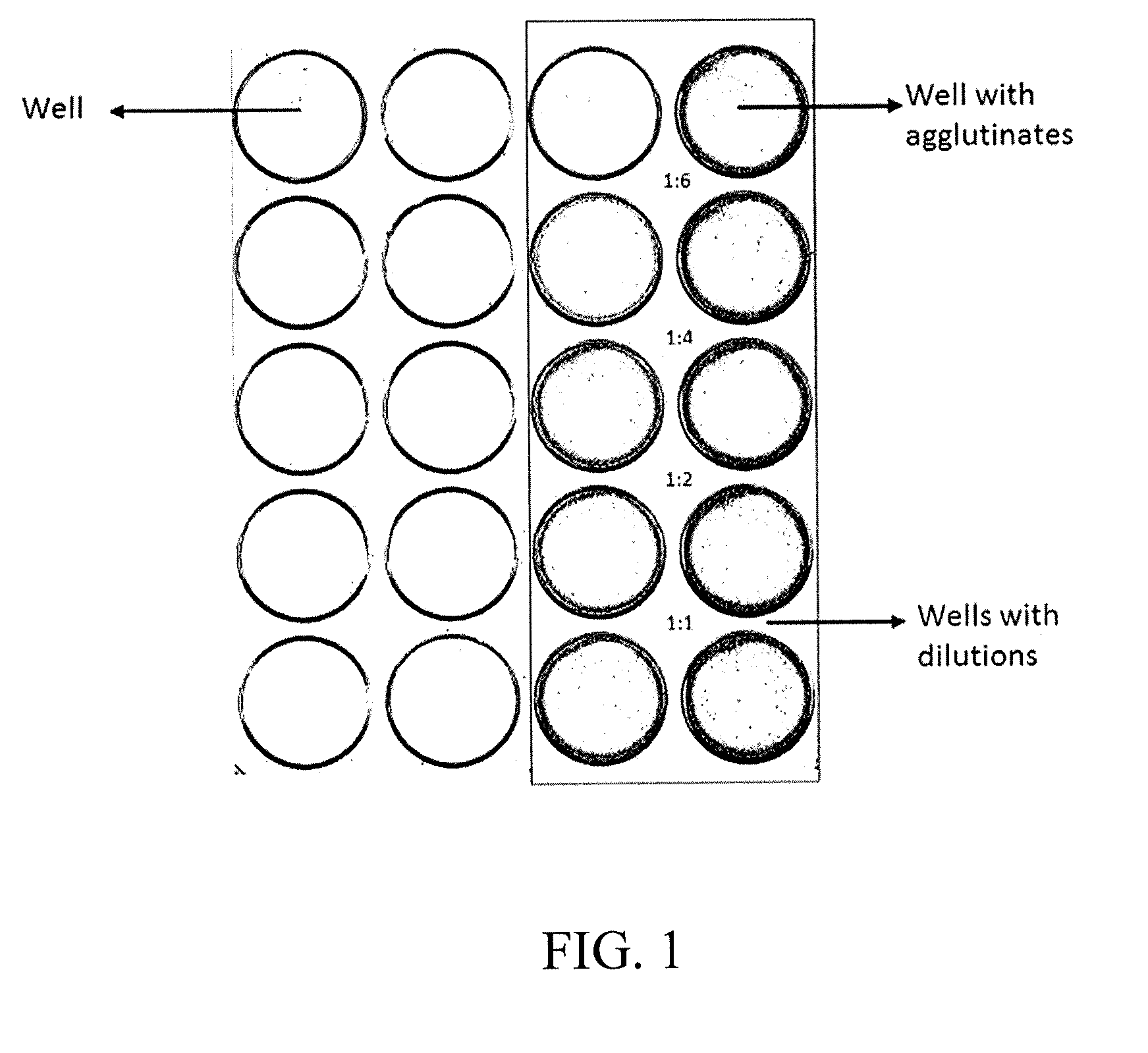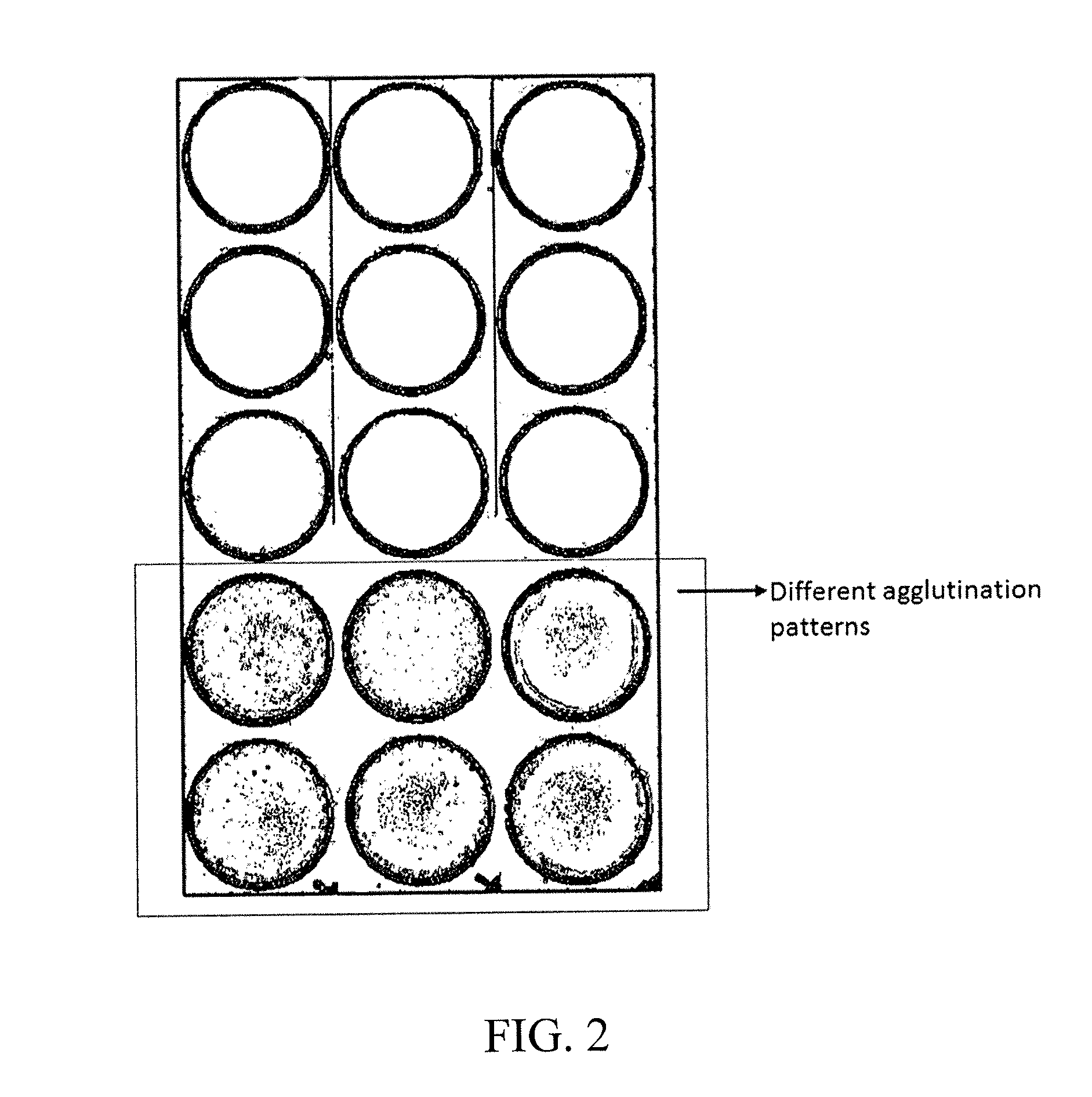Method for analyzing image data relating to agglutination assays
a technology of agglutination assay and image data, which is applied in the direction of analysis by subjecting materials to chemical reactions, material testing goods, instruments, etc., can solve the problems of not studying the reproducibility of patents, affecting the reproducibility of agglutination assay, and unable to demonstrate the reproducibility of such analyses, etc., to achieve the effect of increasing enhancing the agglutination in the image, and maximizing the signal to noise ratio ratio
- Summary
- Abstract
- Description
- Claims
- Application Information
AI Technical Summary
Benefits of technology
Problems solved by technology
Method used
Image
Examples
example 1
[0135]The following example was carried out by realizing a Toxoplasmosis agglutination reaction.
Sample Requirements for the Toxoplasmosis Test:
[0136]Human serum is collected by centrifugation from clotted human blood, obtained from vein puncture. Preservatives agents should be avoided. If the test is not carried out on the same day, the serum should be stored at 4° C. for a maximum of 48 hrs; for longer periods, it is advisable to freeze the sample.
[0137]The reaction may be performed over transparent polystyrene slides, with reaction areas delimited by ledges of the same material defining a circle.
Materials:
[0138]Automatic pipettes of 30 and 60 μL.[0139]Disposable tips.[0140]Orbital shaker (speed between 80 to 90 rpm).[0141]Thermometer for measuring from 32.00 to 122.00° F. (able to allow the measure of tents of degree).[0142]Sample Solvent: 8.5 g / l NaCl, 1 g / l BSA (bovine seroalbumine), 1 g / l sodium azide, 1 liter H2O sqf.[0143]Chronometer.
Latex Reagent
[0144]The dilution of a latex...
example 2
[0189]Example 2 was carried out by realizing a Hemoagglutination reaction.
[0190]In this example the application of the proposed method for the semiquantification of hemoagglutination reactions for blood typing is shown.
[0191]The traditional technique of hemoagglutination is basically quantitative. However, it is also useful for the hematologist to have a measure of the score of agglutination. The agglutination reactions are classified into five classes: negative, and four positive scores (1 to 4 crosses) depending on the agglutination strength.
[0192]Sample Requirements for the Hemoagglutination Test:
[0193]Blood collected with or without anticoagulant may be used. Tests are preferably carried out as soon as possible after collection. Samples are preferably stored at 2-8° C. to account for possible delays in conducting the tests. Blood obtained by finger puncture may be tested directly by the slide method, but to avoid clotting, blood collected in this manner should be mixed with the ...
PUM
 Login to View More
Login to View More Abstract
Description
Claims
Application Information
 Login to View More
Login to View More - R&D
- Intellectual Property
- Life Sciences
- Materials
- Tech Scout
- Unparalleled Data Quality
- Higher Quality Content
- 60% Fewer Hallucinations
Browse by: Latest US Patents, China's latest patents, Technical Efficacy Thesaurus, Application Domain, Technology Topic, Popular Technical Reports.
© 2025 PatSnap. All rights reserved.Legal|Privacy policy|Modern Slavery Act Transparency Statement|Sitemap|About US| Contact US: help@patsnap.com



